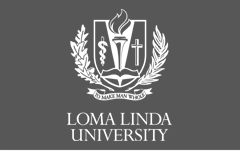Abstract
INTRODUCTION AND OBJECTIVES: Keloids are well known to be challenging sequalae to trauma and surgical procedures. They are produced in response to aberrant wound healing with overactive fibroblasts driving the proliferation of the keloidal tissue outside the initial boundary of trauma. Keloids are difficult to treat with no consistent and successful protocol for management. However, multiple modality treatment methods combining surgical excision and immediate post-operative radiation have shown reduced reoccurrence rate. The purpose of this report is to demonstrate one such protocol showing success in treating multiple keloids on the same patient along with a subset of others. The patient is an African American male with a history of painful keloids over the torso, neck, and face with a surgical history of multiple resections and laser treatments over the last 8 years without significant reduction of keloidal burden.
METHODS: Treatment protocol consists of: Topical Imiquimod for 6 weeks pre-resection, Triamcinolone 40mg/ml injected into the planned excision margin 10-14 days pre-excision (dosage: 1mg/kg body weight), surgical excision with no tension applied to closure using Integra artificial dermis, immediate post-op radiation (within 6 hours of resection), followed by steroid injection as listed above at 6 weeks and 10 weeks post-op.
RESULTS: A right abdominal wall keloid was surgically excised following the above protocol to the subcutaneous tissue with design of advancement flaps to close most of the 72cm^2 defect. Meshed Integra was used to close the remainder and the patient received adjuvant radiotherapy within 6 hours post-op. A single fraction 10 Gy electron beam radiation was used. Wound was completely epithelialized after 4 months with no recurrent keloids after 23 months. A left back shoulder keloid was excised similarly with complete wound healing at 5 months and no recurrent keloids at 19 months. Bilateral facial keloids were similarly excised with complete wound healing at 4 months and no recurrent keloids as of 11 months. Five other patients have had single keloids excised following this protocol without recurrence with follow-up periods up to 14 months.
CONCLUSIONS: Treatment of keloids with this multi-modality protocol is a promising step towards a consistent and successful form of management.
Recommended Citation
Sheridan, Brenden
(2019)
"A Novel Multi-Modality Protocol for Recalcitrant Keloid Management,"
Loma Linda University Student Journal: Vol. 3:
Iss.
2, Article 13.
Available at:
https://scholarsrepository.llu.edu/llu-student-journal/vol3/iss2/13

